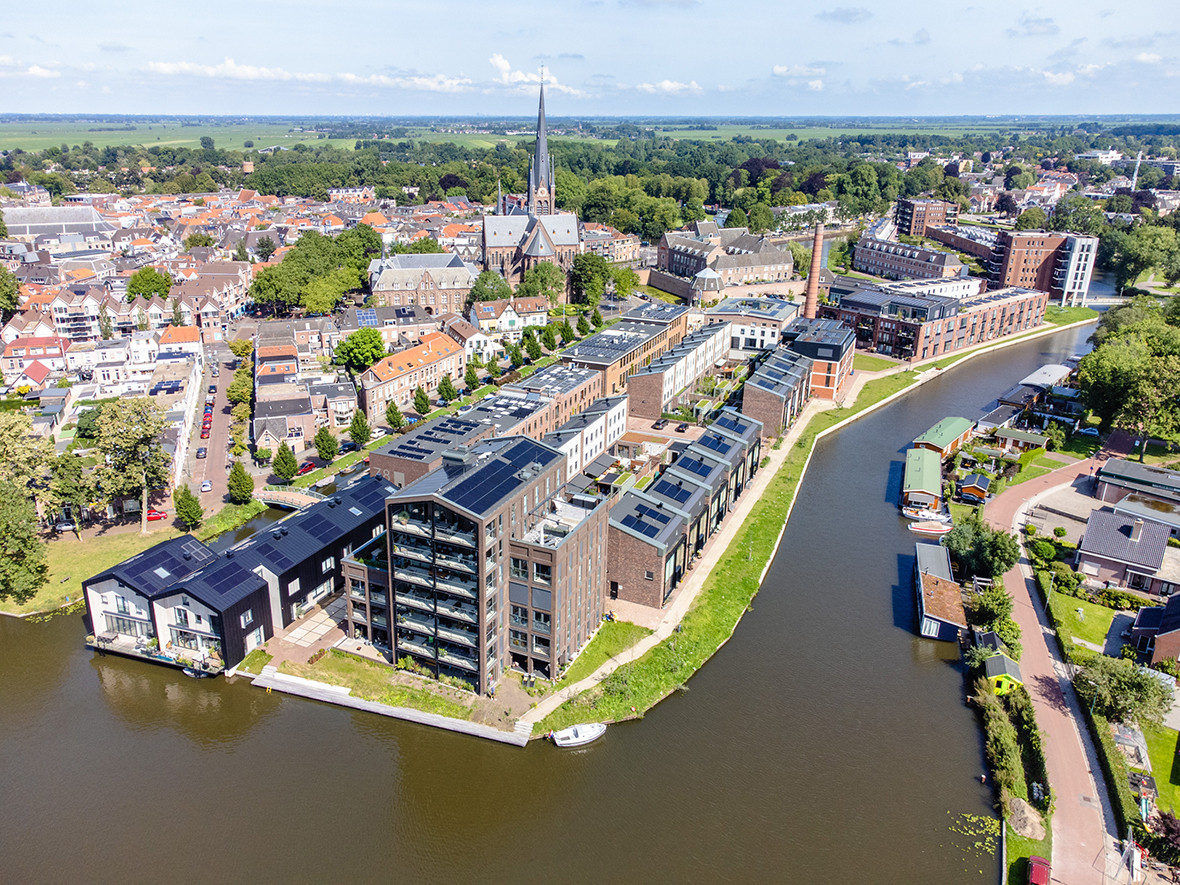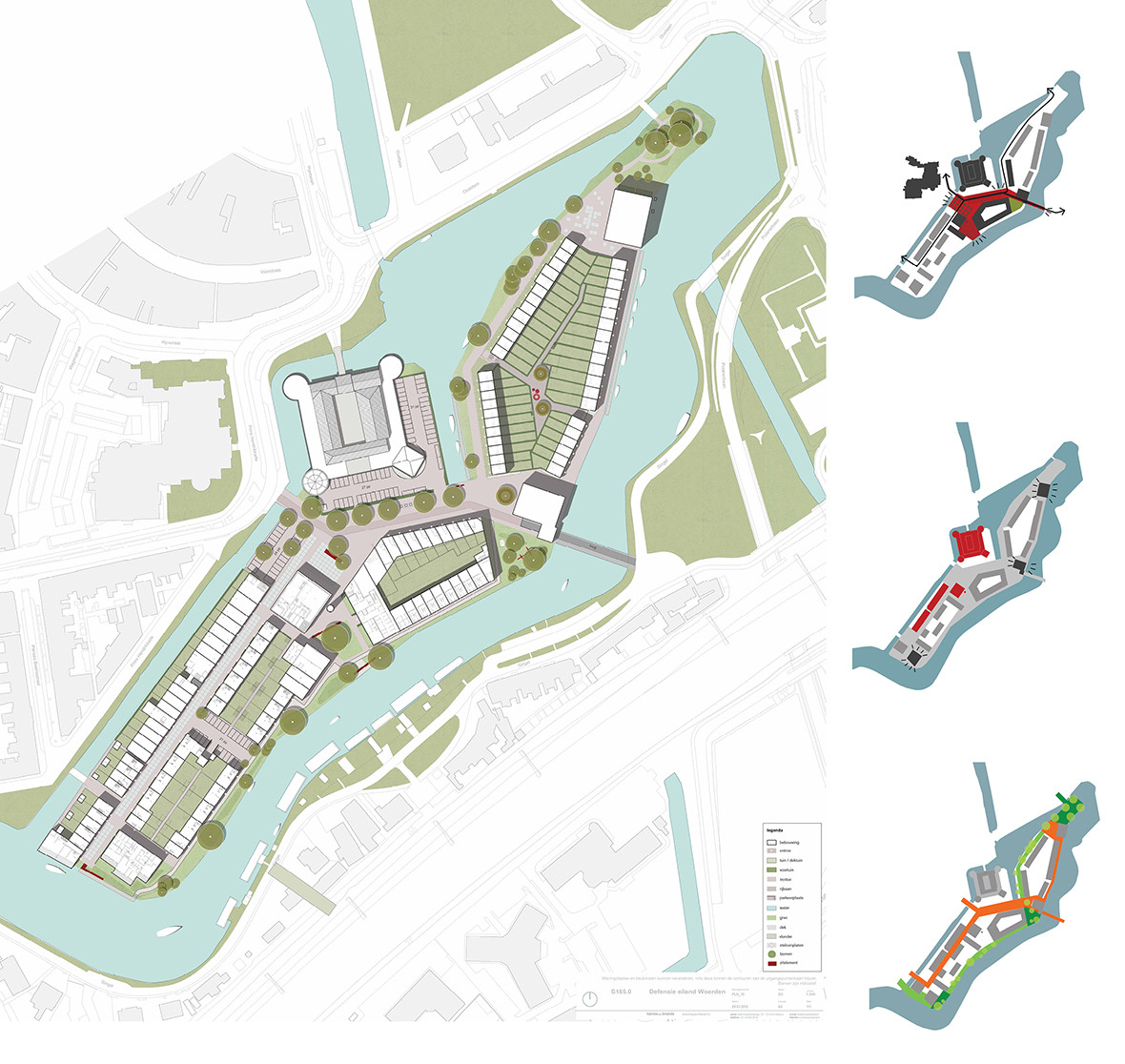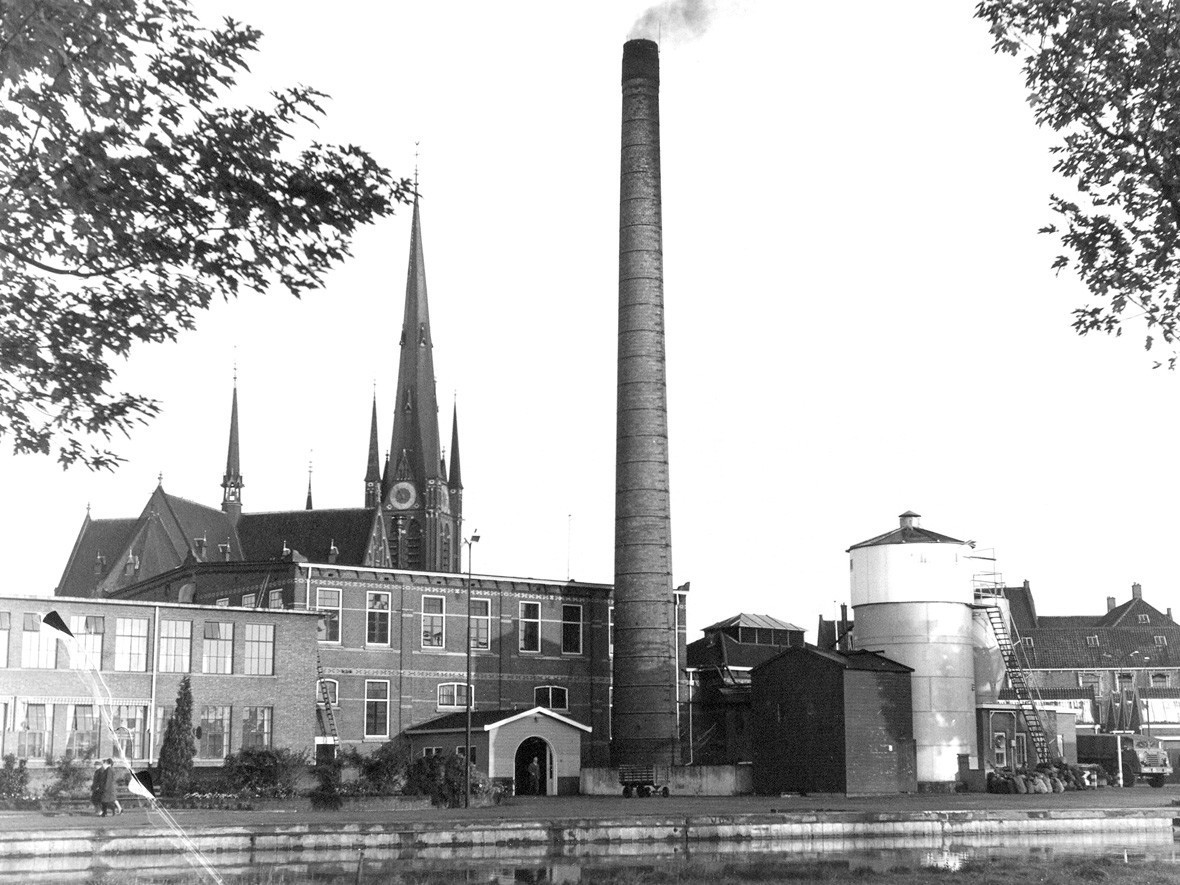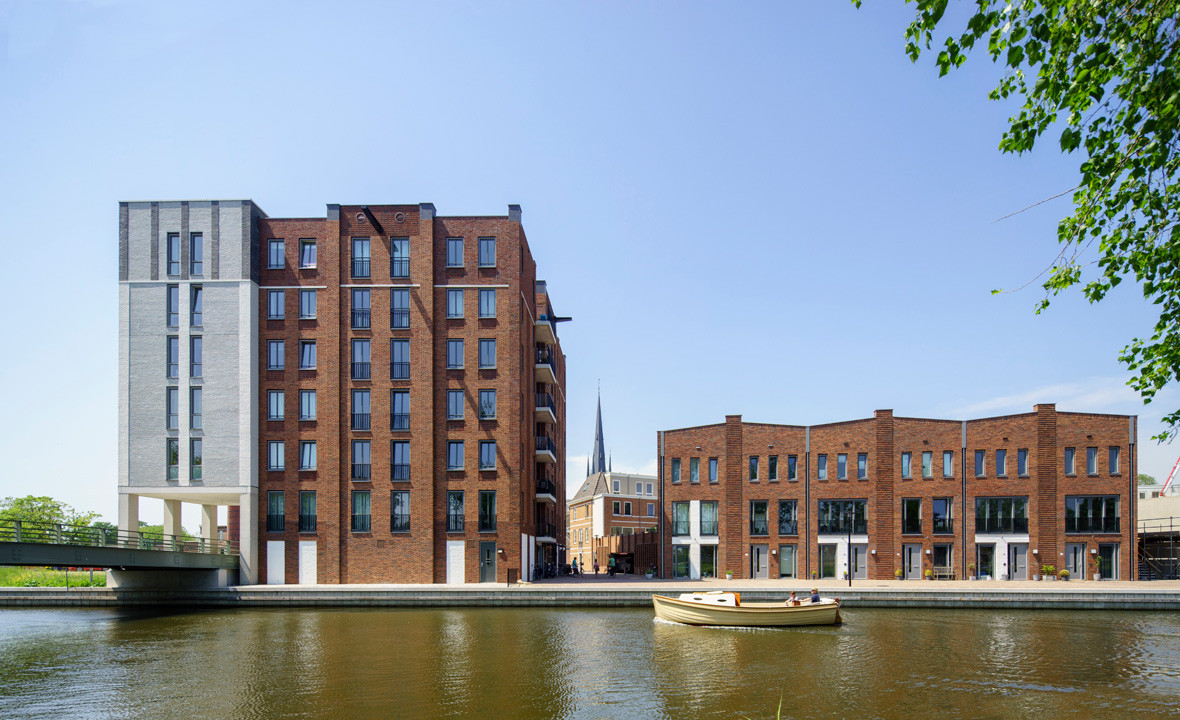


The Defensie-eiland (the defensive peninsula) is located in the middle of the Singel canal and borders the historic city centre of Woerden. The peninsula forms part of the monumental fortress surrounding the city centre. From the end of the 19th century until the end of the 20th century, the peninsula served as a central workplace where clothing, tents, and other examples of army equipment were repaired. During all of those years, it was a secure area which Woerden residents could not access. When the area was no longer used for military purpose, the peninsula underwent a transformation from an isolated and heavily polluted part of the city to an attractive residential location in the heart of Woerden.

Karres en Brands has been asked to further elaborate the urban plan, the public space, and the new bridges. The biggest design challenge was making Defensie-eiland feel like part of the city Woerden once more and incorporating it into the route between the train station and the city centre.


The Defensie-eiland has become a unique area in Woerden: it now encompasses beautiful walking routes, idyllic squares, and roughly 210 homes. The most important principle in the redevelopment was to maintain the identity of the island, with its old-fashioned and stalwart buildings as well as its green character. This meant both preserving and repurposing a number of stand-out buildings that are vital to the image of the area, such as the Wasserij (washery), the schoorsteen (chimney), and the buildings where textiles were sorted. The new, high-quality construction was designed to match the style of the old buildings or as a response to the architecture of the Singel canal. Plenty of attention was paid in particular to the transitions between public and private spaces, such as front gardens, front steps and paved areas in front of homes, and robust quays. The original cobblestones and concrete slabs have been restored to their place in public spaces, which represents a sustainable and circular solution while also making the history of the location tangible and real. This connects the public space to the original atmosphere and character of the island.


The four new bridges designed by Karres en Brands connect the island to the city centre of Woerden and the train station area. The island is therefore an important link in the connective tissue of Woerden’s city centre, and is being incorporated into the ‘walks through the city centre’ of many local residents.
| Location. | Woerden, Netherlands |
|---|---|
| Assignment | Design urban plan, visual quality plan, public space organisation, and bridges |
| Size | 3.3 hectare |
| Design | 2011 – 2014 |
| Construction | 2013 – 2021 |
| Status | Realized |
| Client | De Wasserij CV (VORM Ontwikkeling and Blauwhoed Eurowoningen Zuidwest BV) |
| In collaboration with | Gemeente Woerden, GROOSMAN architecten, Zecc Architecten, Braaksma & Roos Architectenbureau, Scala Architecten, Toba architecten |
| Copyright images | Bas Gijselhart, Chiel van Diest |